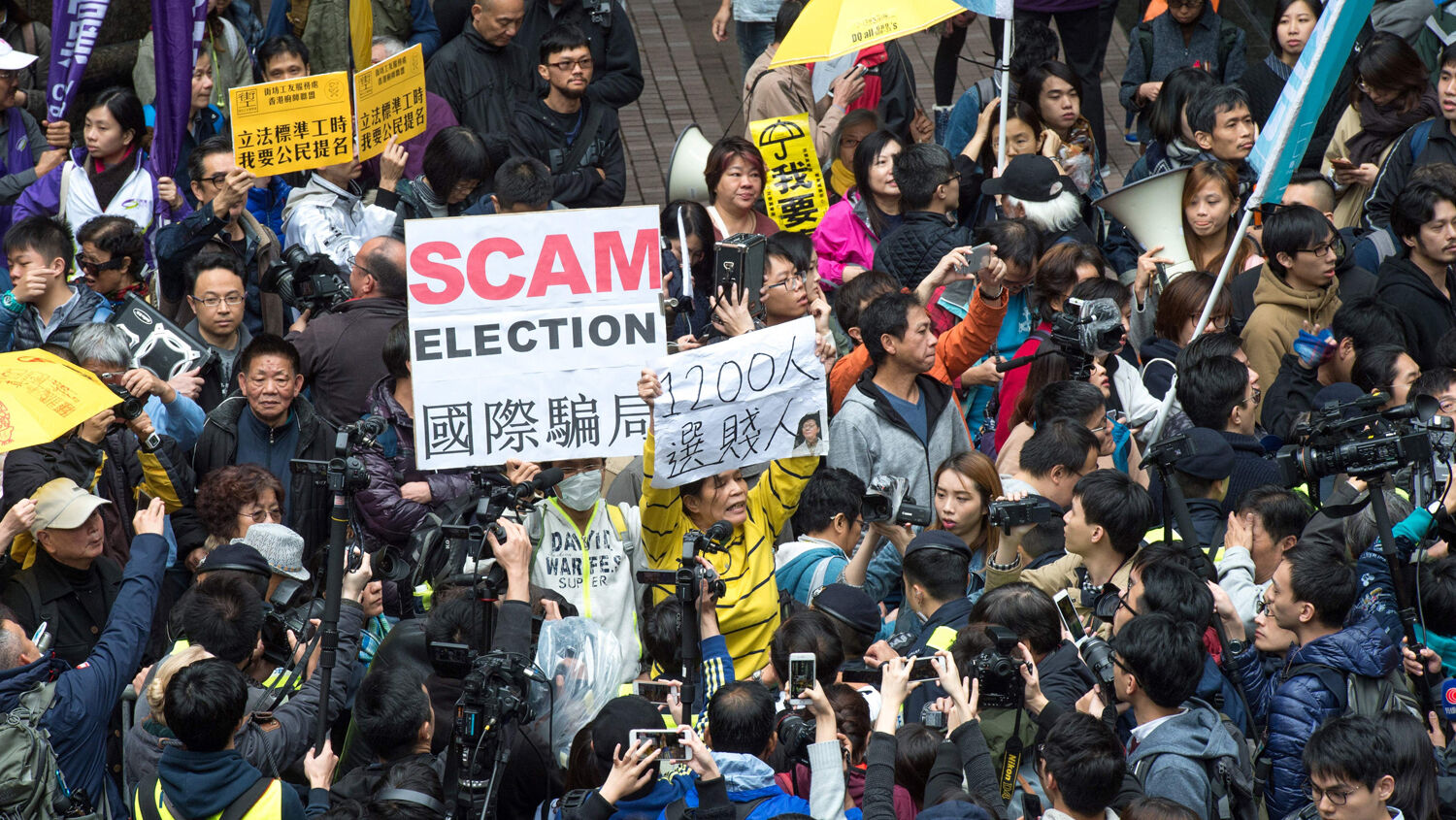
What Does an Election Without Voters Look Like?
American Democrats outraged at President Donald Trump’s election without the popular vote should take a look at Hong Kong. Its 7.3 million citizens chose their leader on March 26, but only 1,194 “representatives” voted. And while the clear majority of citizens wanted a leader who would weaken China’s influence, the mostly pro-China establishment representatives voted in a candidate with around 25 percent popularity.
There were more police on the streets to calm the angry rioters than people actually voting. No one should believe Hong Kong has an independent government.
When Hong Kong was handed over to the Chinese by the British in 1997, it was guaranteed a “high degree of autonomy.” But language is a slippery thing, and the crucial element was who would determine what “high” meant.
That’s why the world turned and heard the songs of Hong Kong during the 2014 Umbrella Protests. Hong Kong wanted a real election—one where more than 0.016 percent of the citizens could actually vote.
So China drew up a plan to make it happen. Mrs. Carrie Lam was chosen to lead the effort. Here was the brilliant plan: Everyone would get to vote, but only once the 1,200 representatives had chosen the 2 or 3 people they could vote for. It was a farce—Chinese-democracy style. Hongkongers ridiculed the new election format, arguing that all it would do was give false legitimacy to a still-undemocratic election. Tens of thousands of people protested. The new system was rejected.
Fast-forward to Sunday’s “election”—which followed the old rules, with only 1,200 electors—and Lam won leadership of Hong Kong, with 777 out of the 1,194 representatives voting for her.
“When the No. 2 official [Mrs. Lam was previously chief secretary for administration] becomes the No. 1, there isn’t going to be much change,” the New York Times quoted Joshua Wong, a leader of the protests that erupted during the elections, as saying. “‘One country, two systems’ is going down the drain, and our high degree of autonomy will exist in name only,” he said.
John Tsang was the popular leader that pro-independence groups hoped would speak up for Hongkongers. Thousands crowded into Hong Kong’s famous harbor to cheer for him, reported Yuen Chan:
“John Tsang! Get elected!” they cried in support of the city’s former finance chief and one of three candidates running in the March 26 chief executive election.
Judging from the crowd’s enthusiasm, you would be forgiven for thinking that this was a real election and the people in the crowd had votes.
Keen on the minds of those protesters was Beijing’s recent interference with two elected pro-independence lawmakers. As these two lawmakers took their oaths of office in October, they used the occasion to mock the mainland. One referred to China as “Chee-na” instead, a common slur used by the Japanese during World War ii. The other added a swear word to the oath. As childish as the edited oaths were, China used them as an excuse to get involved. In an unprecedented move, Beijing intervened in Hong Kong’s local courts to make sure the two pro-independence politicians would not take their seats in the Legislative Council.
It’s actions like these that show China not only won’t endorse the promised “high degree of autonomy” but wants to make sure democracy doesn’t get out of hand either.
The Chinese don’t want to lose control of Hong Kong, a crucial deep-water port and a hub for businessmen around the world. Rising world powers don’t like giving up their territories of influence—so as much as Hongkongers protest, China will push back. Much like the outrageous “one-China” policy with Taiwan (see our booklet Russia and China in Prophecy for our forecasts for Taiwan), China won’t be letting go of Hong Kong because of mere public opinion.
To top off the election farce, a day after Lam was selected, nine leaders of the Umbrella Protests movement were arrested—over 900 days after their offenses. Coincidence, or not?
